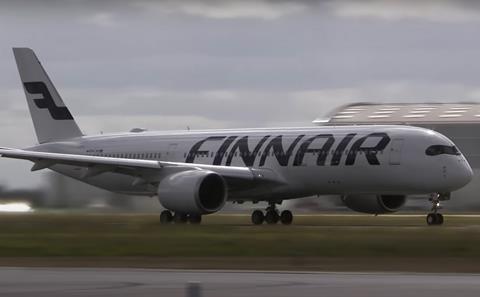Finnair has successfully argued, in a long-running legal case, that it does not have to pay compensation over a flight cancelled after a previously-unknown technical fault was discovered in one of the carrier’s then-new Airbus A350s.
The case centred on cancellation of a Helsinki-Bangkok flight on 25 March 2016, after a fault occurred with a fuel gauge as the aircraft was being prepared for departure.
Case documentation shows the aircraft involved was an A350-900, a type which had only been in Finnair service for five months. Finnair was the first European carrier to receive the A350, taking its first aircraft in October 2015.
Finnair used a reserve aircraft to conducted the flight the following day, but the 20h delay became the subject of a compensation claim by one of the passengers.

During the subsequent eight years the case been appealed, up to the Finnish Supreme Court, over the question as to whether a previously-unknown technical fault in a new aircraft model should be considered an exceptional circumstance – absolving the carrier of responsibility to compensate – or regarded as part of its normal activity.
The Supreme Court requested a preliminary ruling from the Court of Justice of the European Union, which presented its judgement on 13 June.
This judgement acknowledges that the defect on the aircraft was “unknown” prior to the failure, and neither the manufacturer nor the aviation safety authorities were aware of it. The failure was ultimately remedied after 24h by draining and refuelling the tank.
The court says that, while aircraft operation “inevitably” gives rise to technical problems, the Finnair case originated from a “hidden design defect” which was not inherent to the airline’s normal activity.
It also rules that, although resolving technical problems is “part of the burden” of airlines, the presence of a hidden design issue – revealed only by the manufacturer or regulator after the flight cancellation – is “different”. There is “doubt”, the ruling adds, as to whether an airline has the competence to identify and remedy such a problem.
European air transport regulations, it concludes, must be interpreted to mean that an “unforeseen and unprecedented” technical failure affecting a new model of aircraft, recently put into service, falls within the classification of ‘extraordinary circumstances’.


























